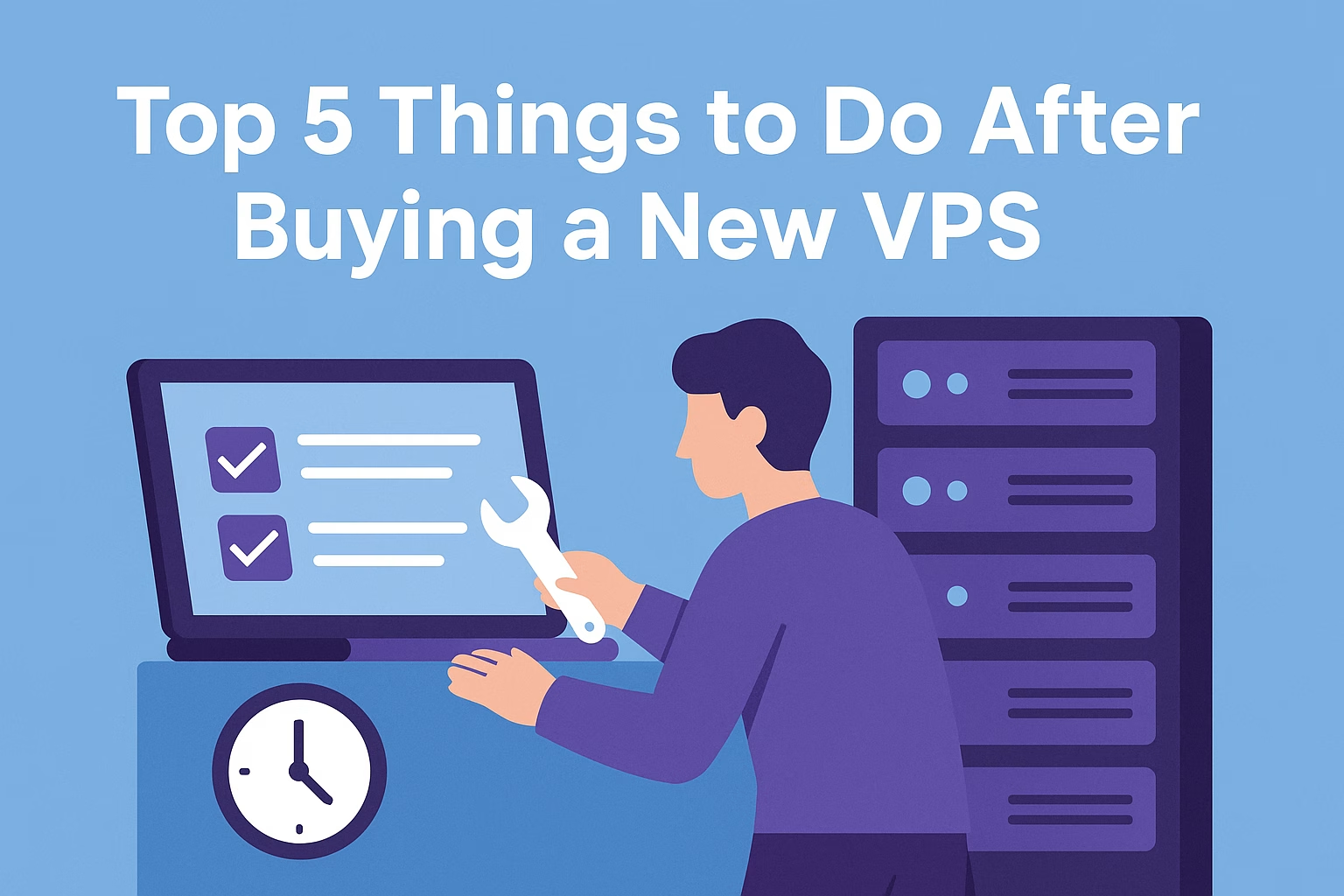So you’ve just purchased your new Virtual Private Server (VPS)—congrats!
But unlike shared hosting, a VPS gives you full control… and that also means more responsibility.
What now?
Before you launch your website or app, here are 5 essential steps to secure, configure, and optimize your VPS from day one.
✅ 1. Update the Operating System
The first thing you should do is update your OS to the latest stable version.
On most Linux-based systems:
# For Debian/Ubuntu:
sudo apt update && sudo apt upgrade -y
# For AlmaLinux/CentOS/RHEL:
sudo dnf update -y
Why?
-
Fixes known vulnerabilities
-
Patches bugs
-
Improves compatibility with latest software
💡 Pro Tip: Enable automatic security updates for peace of mind.
🔐 2. Secure SSH Access
Your VPS comes with root access—powerful, but risky if left unprotected.
Here’s what to do:
-
✅ Change the default SSH port (from 22 to something else)
-
✅ Disable root login via SSH
-
✅ Create a new user with
sudoprivileges -
✅ Use SSH key authentication instead of password (for stronger security)
Example:
# Create a new user
adduser yourusername
usermod -aG wheel yourusername # For AlmaLinux/CentOS
🛡️ PLiKhost VPS supports full SSH access—so secure it wisely.
⚙️ 3. Install a Web Stack or Control Panel
Depending on your goal, you might want to:
Option A: Set up manually (for advanced users)
Install LAMP (Linux + Apache + MySQL + PHP) or LEMP (with Nginx) stack.
# Example: Install Apache and PHP (Ubuntu)
sudo apt install apache2 php libapache2-mod-php
Option B: Use a control panel (for convenience)
Install cPanel, Webuzo, or other panels to manage websites, databases, and email via GUI.
PLiKhost offers panel options on request—just let us know!
🛡️ 4. Set Up a Basic Firewall
Prevent unauthorized access with a firewall like:
-
UFW (simple and beginner-friendly):
bashsudo ufw allow OpenSSH
sudo ufw enable
-
CSF (advanced, with cPanel)
-
Or configure iptables manually if you’re experienced
Also consider:
-
Installing Fail2Ban to prevent brute-force attacks
-
Enabling Imunify360 if available (PLiKhost offers this on request)
💾 5. Set Up Backups
Never launch a production site without a backup strategy.
You can:
-
Set up daily/weekly local backups (cron job + rsync)
-
Use PLiKhost’s remote backup option for added safety
-
Consider tools like Rclone or Borg for automation
Backups protect you from data loss, hacks, or accidental mistakes.
Bonus: Other Good-to-Have Steps
-
📧 Set up your hostname and mail server (if needed)
-
📈 Monitor resource usage with tools like
htop,vnStat, or Netdata -
🧪 Test performance and security (use tools like
GTmetrix,SSL Labs, etc.)
🟢 Why PLiKhost?
With PLiKhost VPS Hosting, you get:
-
SSD-powered performance
-
Optional managed support (we handle all the above)
-
Daily and remote backup options
-
Full root access or control panel
-
Security tools like Imunify360 (on request)
-
Local support in Bahasa Indonesia and English
Final Thoughts
Setting up your VPS properly on day one saves time, frustration, and risk later on.
If you’re unsure, PLiKhost can assist with setup or offer a Managed VPS option—so you can focus on your project, not server maintenance.
🟢 Get Started with PLiKhost VPS
Need help? Just contact us—we’re ready to assist.






